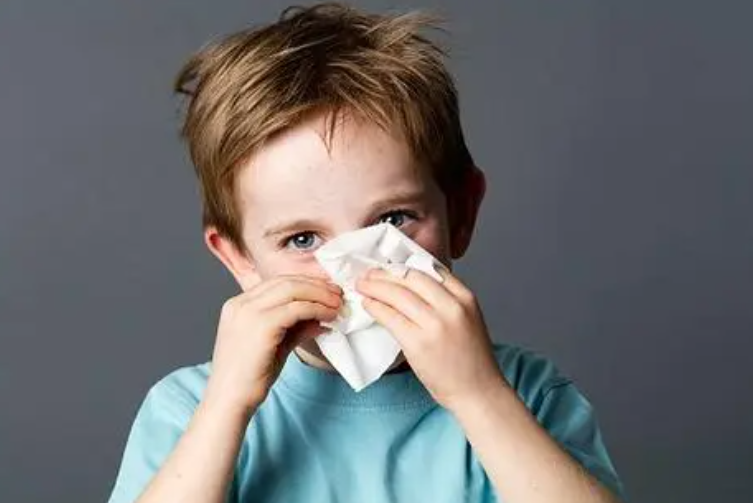
When an allergic person meets an allergen
Allergic rhinitis is an allergic inflammatory reaction of the nasal mucosa caused by allergic people in contact with allergens. The common symptoms are nasal congestion, nasal itching, sneezing and runny nose. Its repeated attacks can appear itchy eyes, tears, poor sleep at night, daytime sleepiness fatigue, serious can cause quality of life decline, affect work and study, and even produce psychological and social barriers.
The occurrence of allergic rhinitis is mainly caused by genetic factors and environmental factors. Usually, inhaled allergens float in the air, with the breath into the nasal cavity will produce allergic reactions, common allergens dust mites, pollen, cockroaches, animal fur, fungi and so on. When the allergic person inhales the corresponding allergen, it will produce an allergic reaction, causing allergic rhinitis.
The heavy use of air conditioning in hot and humid weather will also make the already sensitive nose more susceptible to hot and cold stimulation.
Allergic rhinitis needs long-term control
We should have a basic understanding for the treatment of allergic rhinitis: inflammation cannot be completely eradicated, but it can be eliminated as far as possible; The lesion can not be eliminated immediately, but can gradually recover. It still occurs repeatedly after recovery and needs long-term control; Allergens are always present and need lifelong attention to avoid.
One is to improve the environment: reduce and eliminate exposure to allergens. Including pay attention to personal hygiene: take a bath frequently, change clothes frequently, keep ventilated and dry, wash and air frequently; Keep the room clean; Use personal protection.
Modern equipment such as anti-mite meters, vacuum cleaners, and air purifiers can be used to help remove allergens, including in confined Spaces.
The second is to enhance physical fitness. Keep adequate sleep, regular life, balanced diet, moderate exercise, good attitude; By enhancing physical fitness to improve immunity, it can effectively reduce the probability and degree of sensitization.
The third is standardized drug use, under the guidance of the doctor to use nasal spray, antihistamine drugs and Chinese drugs treatment, and regular follow-up, according to the change of the condition to adjust the drug dose.
The fourth is immunotherapy (desensitization treatment), in the case of finding a clear allergen, receive immunotherapy as early as possible at the same time, can significantly reduce, or even completely alleviate allergy symptoms, can significantly reduce, or even completely get rid of drug treatment. At the same time, it also has the effect of preventing disease aggravation and avoiding new allergies.
Fifth, surgical intervention. Patients with allergic rhinitis are often accompanied by nasal polyps, sinusitis, and deviated nasal septum. For patients with these conditions, which affect nasal function and drug use, surgical treatment should be considered.
Allergic rhinitis in children needs active treatment to prevent growth and development
Spring is the high incidence season of allergic rhinitis and asthma in children. Itchy nose, sneezing, stuffy nose, watery nose, itchy eyes... These are often easily ignored by parents or mistaken for a cold, in fact, most of these symptoms are acute rhinitis, chronic rhinitis or allergic rhinitis.
Although allergic rhinitis is not a serious disease, it can affect children's growth and development, daily life and learning efficiency, and cause family economic burden, and can induce asthma, sinusitis, nasal polyps, otitis media, etc., or occur at the same time with allergic conjunctivitis. Children's long-term nasal congestion and runny nose may stimulate adenoid hyperplasia and hypertrophy, resulting in sleep snoring and easy to cause hypoxia, which will have a certain impact on children's sleep, growth and development, appearance, intelligence, memory and so on.
If it is found that the child often appears nasal congestion, runny nose, sneezing symptoms, should be timely to the hospital for examination and allergen detection, diagnosis of the cause, and timely intervention treatment.
Tips:
Mite allergy so prevent
Mites are easy to breed in a humid and warm environment, and are common allergens in southern China. For mite allergy, daily attention should be paid to:
-
Clean the house frequently.
-
Wash bed sheets and quilt covers in hot water above 55 degrees Celsius every week, and dry them in sunlight or high temperature.
-
Ventilate and dry, and reduce the indoor humidity below 50%.
-
Clothes, sheets and covers placed too long in the wardrobe should be washed and sun-dried before use.
- Clean blankets, velvet blankets, velvet clothing, plush dolls, cats and dogs and other media that are prone to breeding mites.
-
Small items such as plush dolls can be placed in the refrigerator or frozen outdoors in winter to remove mites.
-
Clean air filters and fans every week.
-
Use an anti-mite meter to remove mites from mattresses, bedding, pillows, fabric sofas and other items that cannot be cleaned.
-
Use an air purifier if necessary.

